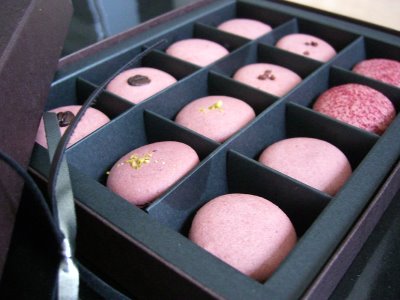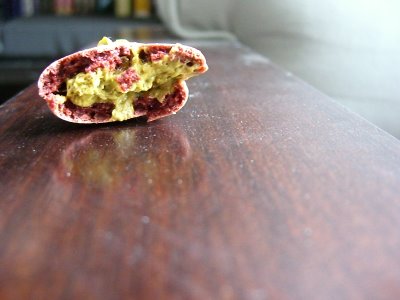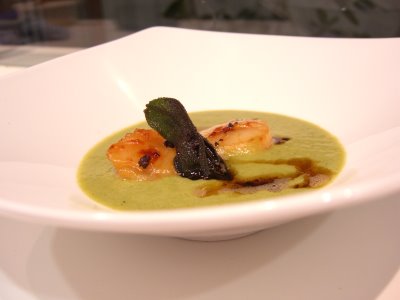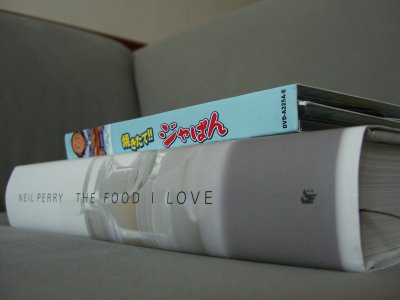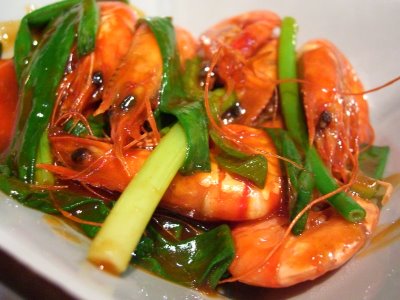
Was in Hong Kong last week on a work trip and grabbed the chance to check out Da Ping Huo, a cosy, private Sichuan kitchen that has been featured in numerous magazines and publications.
Da Ping Huo is located down an alley at 49 Hollywood Road, on the corner of Graham Street. The entrance to the restaurant is dimly lit and unmarked - a silent waiter standing motionless by the door was the only indication of the establishment within. We nod, almost conspiratorially, to indicate that, yes, we are the table for 3 for the 2nd seating. You start to wonder if you're off to dinner or to journeying into the underground to buy contraband.
A quick burst of energy - Wang Hai, owner, maître d', husband of chef Wong Xiaoqiong and apparently also a celebrated painter and talk show host, springs upon us with his cherry red glasses and beaming smile, and chirpily ushers us in.
The space looks more like a gallery than a restaurant, consisting of a single open room of raw concrete. The paintings on the wall - large, almost floor to ceiling canvasses, echo the colours of the room, gloomy grey with sudden splashes of colour. Bright spotlights enhance the drama of the room. Although the restaurant has a mere 5 tables (to seat up to a maximum of 26 diners), these tables are lined up against the wall, leaving a vast corridor in between that showcases the dishes being whisked from table to table.
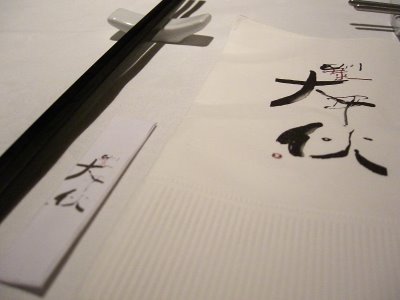
Amidst the modern design elements though are deep hints of the familiar. The larger tables are round rather than rectangular, keeping to the spirit of traditional Chinese communal dining. Unreserved chatter flows endlessly from the tables. One wall proudly displays framed black and white pictures of the chef as a young girl in a Cultural Revolution-era uniform. And Wang Hai's sheepish apology for having to speak in Mandarin (his English isn't very good) reminds you that, for an evening at least, you've escaped from the Four Seasons and the slick, made-for-expats side of Hong Kong.

Likewise, the meal that followed, while sharp, delicate, elaborate and flawlessly executed, was quintessentially home cooking. In contrast to say, Xi Yan in Singapore, where each dish is lavishly presented and the nuances carefully explained, our dishes were served in plain white crockery and laid on the table with little more fanfare than "This is pork. Is not so spicy." (A variant which came up a couple of times was "Is spicy. Maybe eat with rice.")
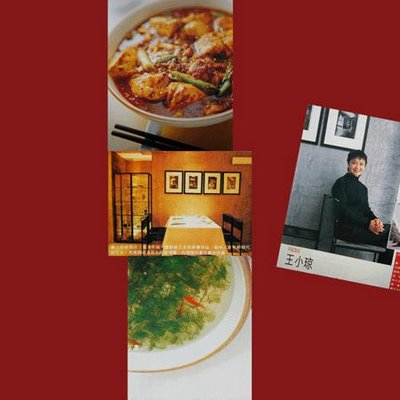
All in, we had 13 courses, consisting of 4 appetizers, 7 "main courses", 1 closing savoury dish and a dessert. Being in the presence of colleagues (our job is in no way related to food), I was a bit sheepish to snap pics or write down elaborate descriptions of each plate, so unfortunately this is the best I can do from memory:
- Sliced cucumbers in Zhenjiang vinegar
- Mapo tofu
- Glass noodles in a spicy sauce with pickled vegetables and crunchy soybeans
- Chicken with peanuts, black beans, chili and sesame oil
- Spiced beef stew
- Braised pork belly with glutinous rice and sweet potato sticks
- Melon soup
- Dumplings in sweet chili and bean sauce
I'm missing 3 appetizers, a soup and dessert, I think. Additing to this smorgasbord copious amounts of rice and tea to douse the fires in us, and you can imagine how completely stuffed we were by the end of the meal. The pain eventually retired though (think by early next morning!), and gave way to pleasurable memories - of nuclear, stinging
la and
tongue-numbing
ma, both of which were to be found in great quantities. Simply put do not trust Wang Hai when he grins at you and cheekily whispers "Is not so spicy". Run for the hills when he raises a worried eyebrow and cautions "Is very spicy". That said, it does save you money on collagen lip injections once the swelling kicks in...
The complexity of each of the dishes, despite their simple presentation and common introduction, really caught me by surprise. Each dish had subtle variances - sometimes a kick of vinegar, sometimes the lingering taste of honey, sometimes the crunch of fresh vegetables. It's amazing how many bad Sichuan restaurants think that a truckload of chillies and peppercorns is all that is needed to make a good dish (fie on you!). The order of the dishes was also perfectly planned in order to prevent your tastebuds from overloading any specific flavour.
In line with the restaurant's quirky but successful marriage of the stylish and the homey, the meal ends with chef Wong stepping out of the kitchen to greet the guests, then taking centrestage in the middle of the room for a round of traditional China music. Wong is a classically trained soprano, and her tiny frame belies her powerful voice. The night we were there, she chose a traditional Xinjiang folk song, a simple but haunting melody involving maidens brushing their hair by flowing streams and calls to harvest grapes for wine.
We finally leave the restaurant the same way we came in - cheerfully escorted by Wang Hai, who pretends not to notice (that or his glasses need changing) our stomach-grasping groaning and painfully slow walk. Even through our pain, we can't miss the pride in his face, the confidence that he, as our host, has shown us a wonderful, one-of-a-kind experience that we'll recall with fondness. He knows we'll be back.
Da Ping Huo is definitely worth checking out when you're next in Hong Kong. At HK$250 a head and 2 hour seatings, it's also a much smaller financial and time commitment than many other private diners, both in HK and in Singapore (dinner at Xi Yan, by comparison, is priced at S$80 a head and requires 4 hours). Pictures (aside from the napkin one that I managed to hurriedly snap) are courtesy of what appears to be the restaurant's official homepage:
http://www.yp.com.hk/dapinghuo/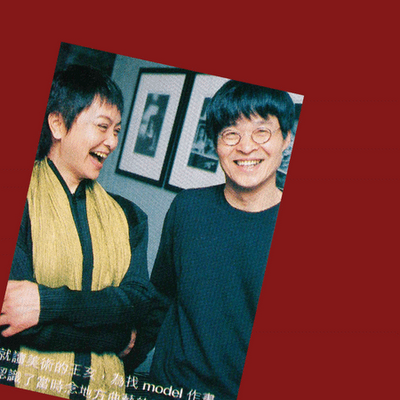
*******************************************
Da Ping HuoL/G Hilltop Plaza
49 Hollywood Road
Central, Hong Kong
Phone: +852 2559 1317
